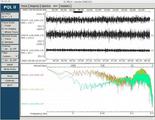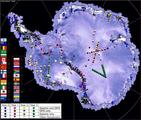
Although PASSCAL station installations can vary according to the type of equipment being used, servicing is relatively straightforward and similar between station designs and equipment.
Station servicing has 3 main goals:
• To retrieve waveform data recorded by the station since the previous service;
• To identify and rectify any problems with equipment or damage to the station;
• To refresh consumable items such as compact flash (CF) cards, batteries, etc.
A simple station with easy vehicular access should take around 20 man-minutes to service.






